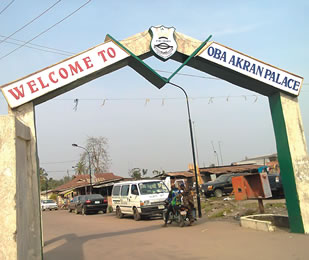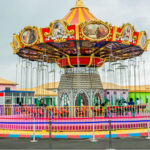
OPPRESSIVE words, such as; slavery, dehumanisation, racism, exploitation and colonialism, are words an average African does not need a dictionary definition to understand what such means. These are words that serve as threads holding the fabric of African people and society for many centuries ago. It can be evaluated that the African history and literature is a configuration of combative stories, with the theoretical concerns on exploitation and oppression. To this end, the academic tourism has been encouraged by private and public sectors, by striving hard to ensure the young generation knowing in their best capacities much about the past and present of Africa with the hope of knowing how to configure and design the future wanted. Many concerns are shown by the Nigerian government about the re-introduction of History in the primary and secondary schools’ syllabus. Geographically, coaster areas are many in West Africa; Gold Coast of today Ghana, Ivory Coast and Slave Coast which is in Nigeria-this area is popularly known as Badagry.
Apart from the fact that Badagry, as a tourist community, is well-known for historical and educational tourism because of the relics of slavery found in the community. There are many places in Badagry, such as; Seriki Faremi Abass Slave Museum, Point of No Return and Badagry Heritage Museums. A walk around and within these places is a kind of historical walk, which I regard as “A moment walk of slavery” or “Few minutes A slave”. There are art works and relics that perfectly symbolize the experience encountered by Africans in the phase of slavery dated back as far as 15th century.
Badagry points to many countries both in Europe and America that were involved in the slave business; Portugal and Brazil are no exceptions, with the evidence of slave cell, such as; Brazilian Baracoon Slave Cell which was built in 1840. The museums have unique relics and artworks, such as varieties of different chains; leg, neck, mouth and hand chains used to bond the slaves brought from the local traders by the Westerners. All these are to be found in Seriki Faremi Abass Slave Museum and Black Heritage museum respectively, even the cells where they were kept prior to the coming of the white buyers are presently in Badagry holding posterity.
Most tourist professionals focus on the oppression suffered by Africans, in the hands of the Westerners. Visiting Badagry ignites one’s consciousness that Africans embarked on series of serious rebellious acts and wars for the abolition of slave trade. During this long period of human trafficking, there were some foreign forces that revolted against this oppressive act in support of African liberation, nevertheless; some were previously involved in the act. Finding one’s self in Ahovikon, at the Wawu Palace, one can see canon gun donated by the British Empire as an “instrument of slave abolition and war”, with the British flag hoisted. This reflects the abolition of African slavery was a collective effort not only by Africans, but with the support of some global forces.
The historical evolution and development of the Western religion known as Christianity in Nigeria has its root in Badagry. It is to be confirmed that the earliest encounter of Africans with Christianity is within this coaster area known as Badagry. As the relics of Christian literature, the first translated version of the Yoruba Bible from the English version is housed in Badagry, not forgetting, the first preaching of the gospel was done in Badagry by Agia Cenotaph in 1942. For the sake of architectural purposes, the ever first storey-building in Nigeria is in Badagry. The only administrative staff college in the whole of Africa known as ASCON is in Badagry. Therefore, it can be concluded that Nigeria encounter with Western culture, language, values, economics and education can be traced to Badagry.
Beaches, such as; Sultan Beach and Coconut Beach, make easy access to the world of fun, peace. Visiting Badagry, if not for the museums, artworks, places and relics, one would doubt if Badagry has once experienced slavery. In respect to hospitality, Badagry is populated many hotels; Soketta Hotel, Haaco Hotel, Esmo Hotel just to mention few. These hotels belong to a class of hotels which could be to as Nature-Star hotels because of the natural environment; the temperature, weather, birds and breeze, one is not only close to nature, but one is with nature.





